Iron Brigade
Command Sergeant Major
- Joined
- Jul 27, 2007
- Messages
- 2,135
I just recently added #3 camels from K&C's LoJ series (now being retired) and K&C set# NE018 of "Guides Officer". In prior 2 or 3 months I also added three other foot figures to this diorama on General Napoleon in Egypt in 1798-1799. I also moved this diorama from the top of a 30 by 10 inch bookcase to a about 30 x 30 inch table which is right next to anonther display table showing Napoleon in 1800 to 1815 period. About 2/3 of the display table is used for this diorama. For photos being shown here at the Forum I placed a piece of poster board paper behind the back part of the diorama so as to avoid showing bookcase, chair, etc beyond the display table. As this display table is not against a wall I do not use this backdrop normally. I was going to also get two of the mounted camels just recently, but as I already basted my toy soldier budget with other purchases I deleted these two sets from my recent orders at least for now. Please see #5 photos below. I think the last one of the close up photo showing the Rosetta Stone being discovered in interesting.
"Iron Brigade" / Gary
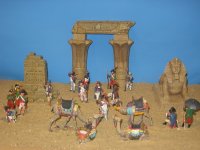
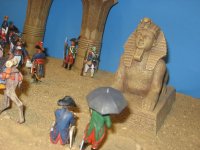
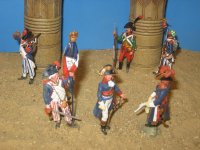
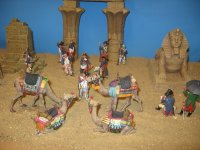
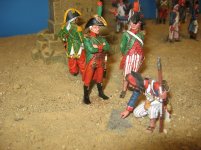
"Iron Brigade" / Gary






